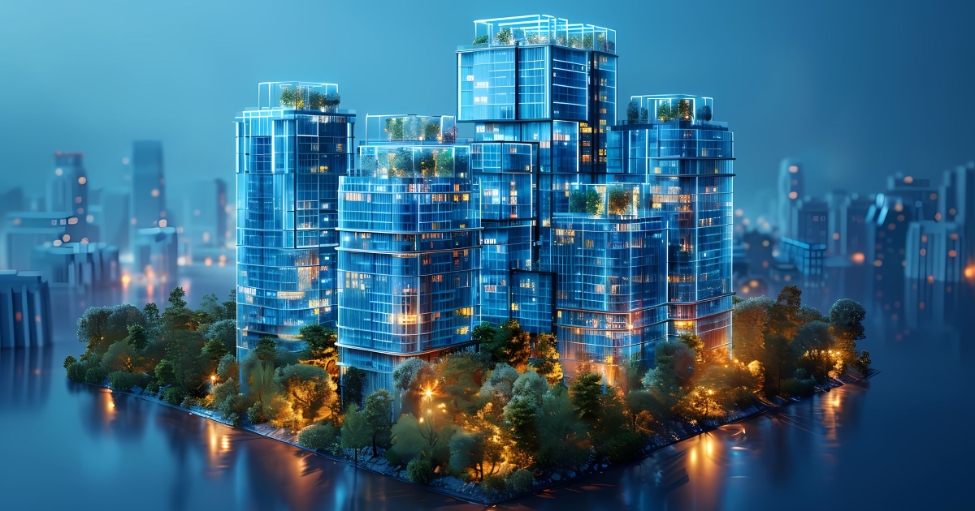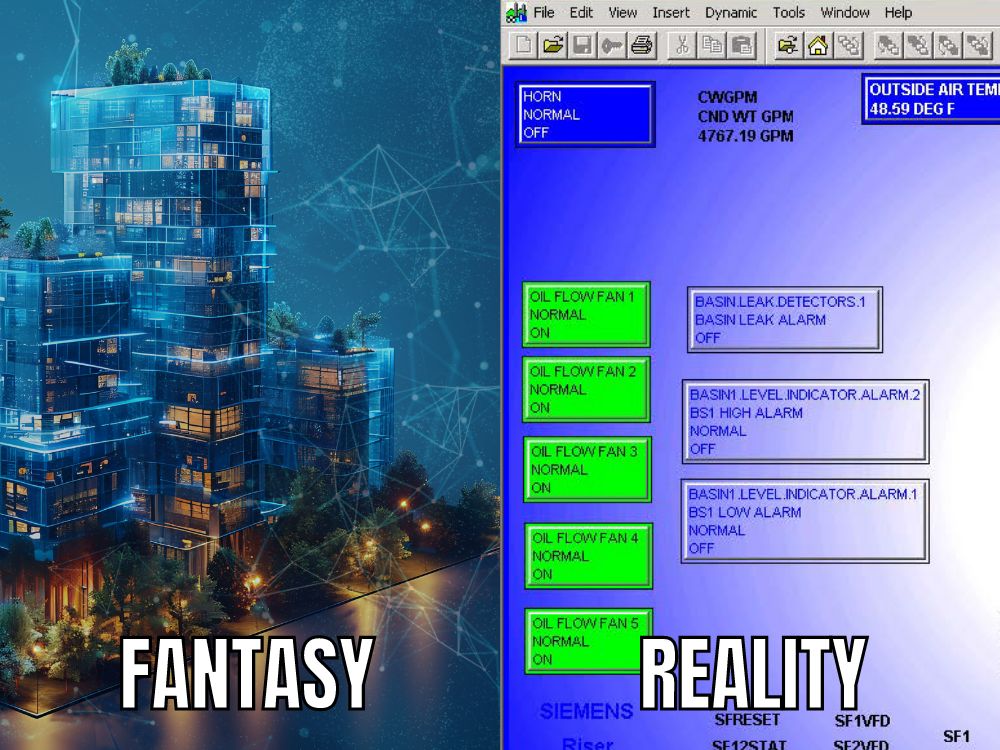AI in BMS Controls – Hero or Hype?
No matter what you think of its promise, the truth about building AI is that it's nothing new. And it’s not ready.
Generative AI programs like ChatGPT and DALL-E are all over the news right now as THE solution to doing everything faster, easier, cheaper. What’s not to like about a program that allows regular users to type a complicated question or set of instructions into an input field and get back a response in plain language in seconds?
But what isn’t being discussed in building operations is how chatbots are different from the type of machine learning processes that buildings use... and how that difference impacts the usefulness of the programming.
Unlike building AI, chatbots use statistics based on large language models and image generators use large image models, where “large” = 100s of millions to billions of parameters and the data set includes a vast portion of the internet. In contrast, building AI uses algorithms and statistical models to derive inferences and make predictions in ongoing building data, a much smaller and more exacting data set.
Another difference between the chat- and image bots and building machine learning is that as far as buildings go, none of this is new. Simple AI has been buried in the individual device controls of many BMSs for years; in others, AI has long been part of larger control algorithms.
What is relatively new is the hype for “whole building” AI (what some vendors call their “building digital twin” solution and others label as an extension of their current building services). Although the term has yet to be uniformly defined, what has been consistent in “whole building” AI is the idea that intense and highly capable algorithms run on high-end servers in the cloud, and those control changes are implemented in the central utility plants.
But is it a solution that really delivers?
Can current AI in or alongside commercial building BMSs adapt and fine-tune building systems to perform perfectly? Can gen AI make fast control decisions that improve complex building situations? Or is whole building AI just a beautiful dream?
The Fantasy vs. the Reality

Although it has been done successfully in a handful of unique cases, the promise of gen AI in building operations is mostly sales hype. Here’s why:
-
There is so much bad data in BMS systems. Poor installation/commissioning, combined with improper maintenance of actuators, devices, meters, and sensors results in data that confuses the AI. AI requires building operations to i) obtain and ii) maintain a high quality of data delivery to the AI.
Specifically,-
To build algorithms and statistical models, machine learning AI needs high-quality historic building data that contains the proper and improper operations of the target building systems.
-
To derive ongoing inferences/predictions, machine learning AI needs ongoing building data that is both accurate and timely.
-
In other words, just as the quality of a meal depends on how good the ingredients are, the usefulness of your AI depends on how good the initial and ongoing data are. Do you have the data you need to start from, or are you missing a key ingredient? And are you prepared to keep up that quality of data through every update, every reconfig, every new install?
-
Most BMSs consider data delivery to third-party systems, like AI, a low priority. Machine learning AI may or may not require “near real-time” delivery of ongoing building sensory data. But AI does require predictable and regular delivery of ongoing data. So how fast will your BMS deliver data to the AI? Be prepared for difficult conversations with your BMS vendor about data throughput, systems overhead, and performance (not to mention the costs of upgrades, which has no ROI).
-
Is all the AI data necessary to predict a building or systems operations available? Most BMSs are minimally instrumented. BMS actuators, devices, meters, and sensors are typically required based on pre-defined control strategies and building operations modes/seasons. It’s rare that your BMS will have all the sensors and especially the meters required for machine learning AI.
-
Defining what your BMS data means to the AI may be the toughest ongoing problem. Actuators, devices, systems, and occupants within a building are always changing. As occupants change or sensors fail or building systems are updated, their purpose (context) within the building may change. These changes may or may not require an update to AI settings or algorithms. Keeping on top of this will be key to an AI that works for you rather than against you.
No matter how AI is implemented or who implements it, AI requires an owner’s manual. Do not allow these issues to be “left to the BMS” guy. Do not assume your building engineers have the time, experience, and skills to support AI.
What can you do? Make sure your building operations team has the ability to or has access to experts who can:
-
Monitor AI for data issues, inaccurate outcomes, and algorithm and model issues.
-
Understand the basic AI settings to retain proper AI operation.
-
In case of emergency, communicate effectively with building operations experts with AI knowledge and experience to improve your existing BAS savings or expand the AI’s capabilities and then validate the savings.
This article was 100% written by a human. Building images were generated using Midjourney.
Want to integrate, design, or install submetering in your next project?
We can helpAbout utiliVisor
Your tenant submetering and energy plant optimization services are an essential part of your operation. You deserve personalized energy insights from a team that knows buildings from the inside out, applies IoT technology and is energized by providing you with accurate data and energy optimization insights. When you need experience, expertise, and service, you need utiliVisor on your side, delivering consistent energy and cost-saving strategies to you. What more can our 40 years of experience and historical data do for you? Call utiliVisor at 212-260-4800 or visit utilivisor.com

